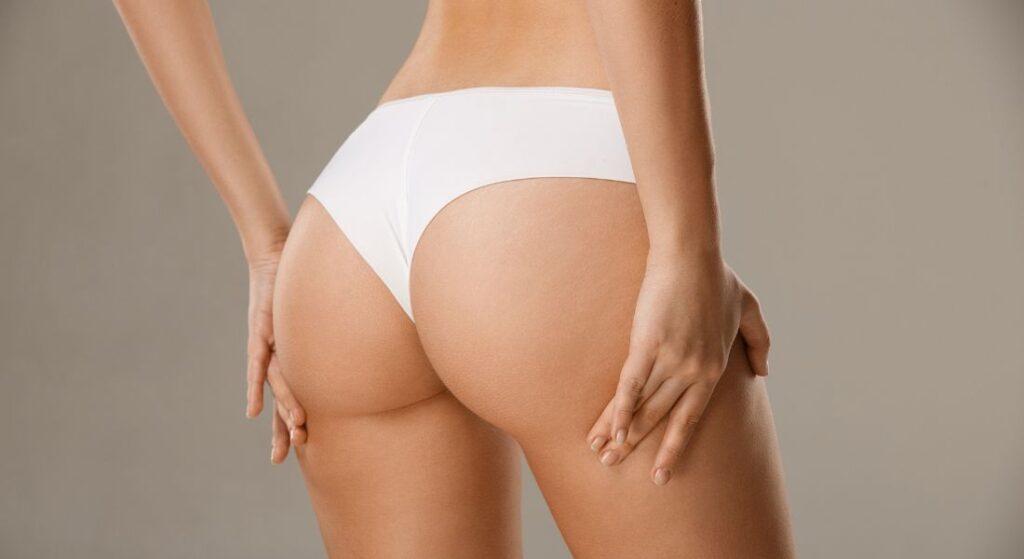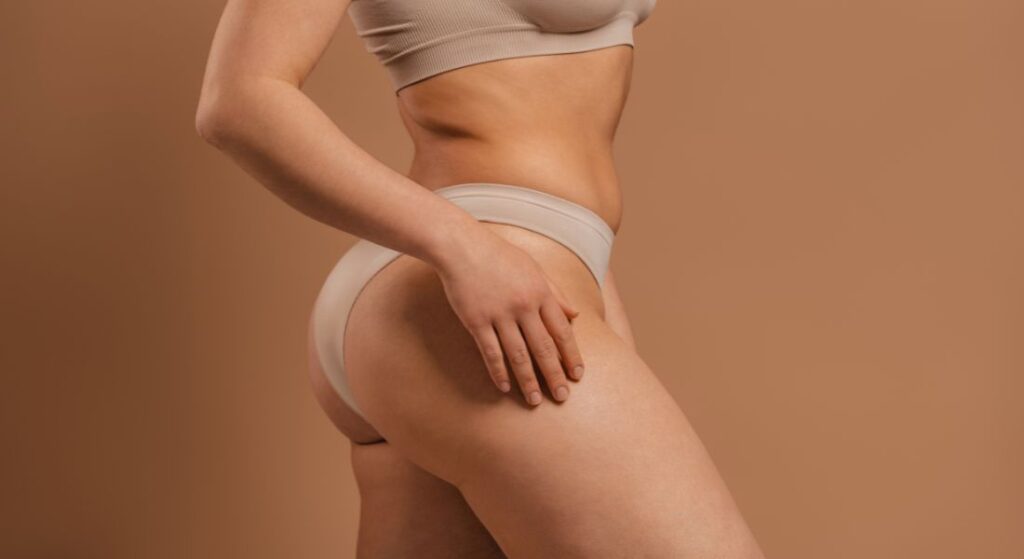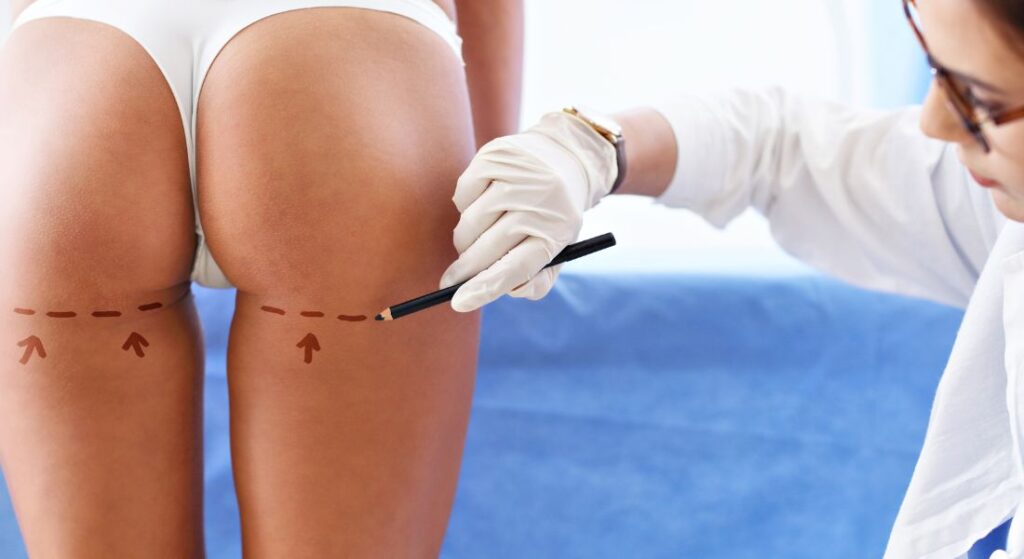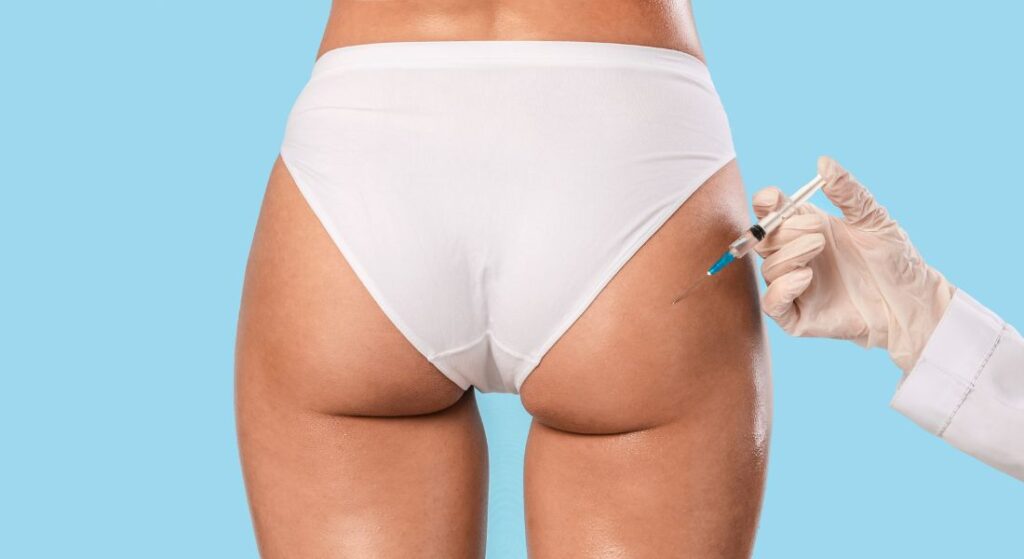
Hip dips those natural inward curves along the sides of your hips are a perfectly normal part of how many bodies are shaped. They’re not a flaw or something that “needs” to be fixed. That said, if you’re someone who notices them when wearing certain clothes or swimsuits, or if they make you feel self-conscious about your silhouette, it’s completely understandable to want a solution that can smooth out the area.
While surgery has traditionally been the go-to for reshaping body contours, not everyone is ready for a surgical procedure. That’s where non-surgical treatments like Sculptra come in. If you’ve been exploring ways to subtly enhance your curves without going under the knife, you might be wondering whether Sculptra can actually help fill in those hip dips and create a more even contour.
In this article, I’m going to break down exactly how Sculptra works for hip dips, what you can expect during your treatment sessions, and the kind of results you might realistically see. By the end, you’ll have a clearer picture of whether this non-surgical approach could be the right choice for you.
What is Sculptra?

Sculptra is a collagen-stimulating injectable treatment made from poly-L-lactic acid (PLLA). Unlike traditional fillers that add immediate volume, Sculptra works by stimulating the body’s natural collagen production. Over time, this leads to a more subtle, natural-looking volume increase in the treated area.
Sculptra is typically used for facial rejuvenation, but it’s also increasingly being used in other areas of the body for contouring, including the hips, buttocks, and even the hands. The results are gradual, but they tend to last longer than many other injectable treatments because they rely on your body’s collagen production.
Because Sculptra encourages your own collagen to rebuild the skin’s structure, the improvements develop progressively over several weeks to months, creating results that look and feel natural.
How Does Sculptra Work on Hip Dips?

Sculptra for hip dips involves carefully injecting the product into the areas of the hips where the natural indentations are most visible. These inward curves, often called “violin hips,” are caused by a combination of bone structure, fat distribution, and muscle shape. The poly-L-lactic acid in Sculptra stimulates the body’s own collagen production, which gradually fills in the depressions and enhances the natural curves of the hips over time.
Here’s how the process works in more detail:
Collagen Stimulation Once injected, Sculptra begins to activate the body’s natural collagen-building process. Collagen is a protein that provides structure and elasticity to the skin, and by encouraging its production, Sculptra helps increase skin thickness, firmness, and volume in the targeted hip area. This structural support helps reduce the appearance of deep indentations.
Gradual Volume Increase Unlike hyaluronic acid fillers that give an instant plumping effect, Sculptra works slowly and steadily. Over several weeks to months, new collagen fibres form, leading to a gradual but noticeable increase in volume. As the collagen network strengthens, the hip area appears fuller and more balanced, creating a smoother outer silhouette.
Subtle and Natural Results Because the changes happen over time, the final result blends seamlessly with the rest of the body. The gradual transformation ensures that the hips don’t look overfilled or artificial, making it an ideal option for those seeking a natural, proportionate enhancement rather than dramatic or obvious changes.
The treatment is non-surgical and involves no incisions, which means there is minimal downtime compared to surgical contouring procedures. Since Sculptra works with your own collagen production, the improvements not only look natural but also tend to last longer than many other injectable treatments.
What Results Can You Expect?

Sculptra for hip dips delivers gradual, natural-looking enhancement rather than an instant transformation. The results unfold over several weeks as your body produces new collagen, creating a smoother, more contoured silhouette. Here’s what you can typically expect from the treatment in more detail:
Gradual Improvement in Contour
Visible changes usually begin to appear around 6 weeks after the first session, as collagen starts to rebuild in the treated areas. Full results generally develop within 3 to 4 months, giving your hips a subtly fuller shape and reducing the depth of the indentations. Because the changes occur progressively, the improvement looks organic and not “done,” allowing friends and family to notice a difference without being able to pinpoint exactly what changed.
Natural Volume Increase
Unlike traditional fillers that create immediate but temporary fullness, Sculptra works by encouraging your body’s own collagen production. This means the added volume has the same feel and movement as your natural tissue. Over time, the skin becomes firmer, smoother, and slightly lifted, which enhances the overall hip contour while maintaining a soft, natural appearance.
Long-Lasting Results
The results of Sculptra hip dip treatments typically last between 2 and 3 years, depending on factors such as your metabolism, lifestyle habits, and how well your body produces collagen. Many people choose to have maintenance sessions every year or two to prolong their results and keep the hips looking balanced.
Overall, Sculptra provides a gentle yet noticeable improvement for those seeking a more rounded hip contour without the risks or downtime associated with surgery.
How Many Sessions Are Needed?
For Sculptra treatments targeting hip dips, most people generally need two to three sessions to see their best results. These sessions are spaced about four to six weeks apart, giving your body time to produce new collagen and build on the improvements from the previous treatment.
This gradual scheduling allows the results to develop naturally. Each session adds to the collagen stimulation, creating a smoother and fuller contour over time rather than producing a sudden, artificial change.
The exact number of sessions can vary from person to person. Factors like the depth of the indentations, the amount of volume you want, and how your body responds to Sculptra all play a role in determining how many treatments you will need.
During your consultation, your practitioner will assess your hip shape and discuss your goals to design a plan tailored to you. Each session usually takes 30 to 45 minutes, making it easy to fit into a busy routine with little to no downtime afterward.
How Does Sculptra Compare to Other Treatments for Hip Dips?
If you’re thinking about enhancing your hip contours, it’s helpful to understand how Sculptra compares to other options, such as fat transfer or hip implants. Each method has its own benefits and considerations.
Fat Transfer
Fat transfer involves removing fat from one part of your body using liposuction and then injecting it into the hip dips. This method provides immediate volume, which can be appealing if you want quick results. However, not all of the transferred fat may survive, and additional sessions might be needed to achieve the desired fullness. Because fat transfer is a surgical procedure, it comes with longer recovery times, potential complications, and higher risks compared to non-invasive treatments like Sculptra.
Hip Implants
Hip implants are a surgical solution where synthetic implants are inserted to create a permanent increase in hip volume. While implants can produce dramatic, long-lasting results, they carry risks such as infection, scarring, implant shifting, and other complications that require careful consideration before proceeding.
Sculptra
In contrast, Sculptra is non-invasive, involves no incisions, and has minimal downtime. Its unique advantage is that it works by stimulating your own collagen production, so the results develop gradually and blend naturally with your body. While it doesn’t offer an instant or extreme change like surgery, it provides a subtle, natural-looking contour that lasts for years with proper maintenance.
What Are the Benefits of Sculptra for Hip Dips?
Sculptra offers several advantages for anyone looking to enhance their hip contours without undergoing surgery. One of the main benefits is that it is non-invasive. Unlike fat transfer or hip implants, Sculptra requires no incisions, stitches, or extended recovery periods. This makes it an appealing option for people who want to improve their body shape without the risks and downtime associated with surgical procedures.
Another significant advantage is the natural-looking results. Because Sculptra works by stimulating your body’s own collagen production, the added volume develops gradually. This allows the treated area to blend seamlessly with your natural curves, avoiding an overfilled or artificial appearance.
Minimal downtime is another benefit of Sculptra. Most people can resume their normal daily activities immediately after treatment. Some may experience mild redness, swelling, or tenderness at the injection sites, but these effects usually subside within a few hours to a couple of days, making the process convenient and low-maintenance.
Finally, Sculptra provides long-lasting effects. Unlike traditional dermal fillers that may only last several months, the results of Sculptra typically endure for 2 to 3 years. Because it encourages your body to produce its own collagen, the improvements continue to develop over time, offering a sustained and natural enhancement that can be maintained with occasional follow-up sessions.
Overall, Sculptra combines safety, subtlety, and longevity, making it an excellent choice for those seeking a gradual yet noticeable improvement in their hip contours.
What Are the Limitations of Sculptra for Hip Dips?
While Sculptra offers many advantages, it’s important to understand its limitations before deciding if it’s the right treatment for you. One key consideration is that the results are subtle rather than dramatic. Sculptra enhances your natural contours gradually, so it may not create the same immediate or pronounced volume as surgical options like fat transfer or hip implants.
Another factor is that multiple sessions are usually required. Because the treatment works by stimulating collagen over time, it may take two to three sessions spaced several weeks apart to achieve your desired outcome. This gradual approach can be a benefit for natural-looking results, but it may not suit those looking for a quick transformation.
Finally, Sculptra is not ideal for severe hip dips. If the indentations are deep or you’re seeking a significant change in hip volume, more invasive procedures such as fat transfer or implants may be better suited to achieve your goals. Sculptra is most effective for mild to moderate hip dips where a subtle enhancement is desired.
Understanding these limitations can help you set realistic expectations and choose the treatment that best aligns with your goals.
Frequently Asked Questions:
1. Is Sculptra safe for hip dips?
Yes, Sculptra is generally considered safe when administered by a qualified practitioner. It is made from poly-L-lactic acid, a biocompatible substance that stimulates your body’s collagen. Because it’s non-surgical, it avoids the risks associated with invasive procedures like infection, scarring, or anesthesia complications. Mild side effects such as redness, swelling, or bruising at injection sites are common but usually temporary.
2. How soon will I see results?
Sculptra results are gradual. Most people notice subtle improvements around 6 weeks after their first session, with full results becoming visible after 3–4 months. This is because the treatment relies on stimulating collagen production, which takes time to build up volume and smooth contours.
3. How long do the results last?
Results can last anywhere from 2 to 3 years, depending on factors such as your metabolism, lifestyle, and collagen production. Because Sculptra works by improving your skin’s internal structure, the effects are generally longer-lasting than traditional dermal fillers. Occasional maintenance sessions may help prolong the results.
4. How many sessions of Sculptra for hip dips will I need?
Most people require 2–3 sessions spaced 4–6 weeks apart. The exact number of sessions depends on the depth of your hip dips, your desired results, and how your body responds to the treatment. Each session usually takes 30–45 minutes.
5. Does Sculptra hurt?
Discomfort is usually mild. A local anaesthetic may be applied to minimise pain, and most patients report only slight soreness or pressure during injections. Some redness, swelling, or tenderness may persist for a few hours to a couple of days after the treatment.
6. Can Sculptra create dramatic hip changes?
Sculptra is designed for subtle, natural-looking improvements rather than dramatic transformations. For people seeking a significant increase in hip volume or correction of very deep indentations, surgical options like fat transfer or implants may be more appropriate.
7. Is there downtime after Sculptra?
Downtime is minimal. Most patients can resume daily activities immediately. Temporary side effects like mild swelling, bruising, or redness may occur, but these usually resolve within a few hours to a couple of days.
8. Are there any risks or side effects?
Sculptra is generally safe, but mild side effects may include redness, swelling, bruising, or tenderness at injection sites. Rarely, small lumps under the skin can form if the product is not injected evenly. Choosing an experienced practitioner significantly reduces the risk of complications.
9. Can Sculptra be combined with other treatments?
Yes, Sculptra can sometimes be combined with other non-surgical body contouring treatments to enhance results. However, it’s important to discuss your goals with your practitioner to create a safe and effective treatment plan. They will recommend the best timing and combination to avoid overcorrection or irritation.
10. Who is the ideal candidate for Sculptra hip dips?
The ideal candidate is someone with mild to moderate hip dips who wants subtle, natural enhancement without undergoing surgery. Sculptra is suitable for people in generally good health who are looking for gradual, long-lasting improvements rather than instant, dramatic results. Those with severe indentations or a desire for significant hip reshaping may need to consider surgical options.
Final Thoughts: Is Sculptra Right for You?
Sculptra provides a gentle, non-surgical way to enhance your hip contours, improving volume and creating a smoother, more sculpted silhouette. Its gradual, collagen-stimulating effect delivers natural-looking results without the downtime, incisions, or risks associated with surgery.
While it won’t create the dramatic, instant volume of surgical procedures like fat transfer or implants, Sculptra is ideal for those seeking subtle, long-lasting enhancements that complement their natural shape. With a personalised treatment plan and multiple sessions, results can last 2–3 years.
At London Medical & Aesthetic Clinic, Dr Ayham Al-Ayoubi leads a team of expert practitioners who ensure every treatment is tailored to your body and goals. By carefully planning the injections and monitoring progress, they help you achieve smooth, natural contours that enhance your hips while maintaining a realistic, proportionate appearance.
If you’re considering non-surgical hip enhancement, a Sculptra Hip Dips treatment at London Medical & Aesthetic Clinic under Dr Ayham Al-Ayoubi’s guidance offers a safe, effective, and natural way to gradually refine your hip shape.
References:
1. Fusaro, A., Bass, L., Greeley, K. & Avram, M. (2023) ‘Collagen Stimulators in Body Applications: A Review Focused on Poly-L-Lactic Acid’, Aesthetic Surgery Journal, (PMC) https://pmc.ncbi.nlm.nih.gov/articles/PMC9233565/
2. Injectable Poly-L-Lactic Acid for Body Aesthetic Treatments, PMC, available at PubMed https://pubmed.ncbi.nlm.nih.gov/39592491/
3. Lin, M. J., Dubin, D. P. & Khorasani, H. (2020) ‘Targeted and Individualized Gluteal Poly-L-Lactic Acid Injection for Minimally Invasive Gluteal Augmentation’, Dermatologic Surgery, 46(3), pp. 386–394. https://pmc.ncbi.nlm.nih.gov/articles/PMC10286883/
4. Molecular Insights Into the Effects of PLLA-SCA on Gene Expression and Collagen Synthesis in Human 3D Skin Models, Journal of Drugs in Dermatology (JDD Online) https://jddonline.com/articles/molecular-insights-into-the-effects-of-plla-sca-on-gene-expression-and-collagen-synthesis-in-human-3d-skin-models-containing-macrophages-S1545961624P0285X
5. Efficacy and Safety of Poly-L-Lactic Acid in Facial Aesthetics, Polymers (MDPI), 16(18). https://www.mdpi.com/2073-4360/16/18/2564





